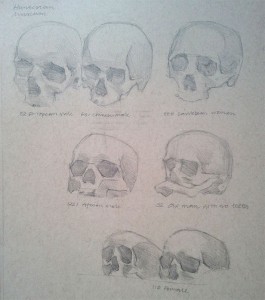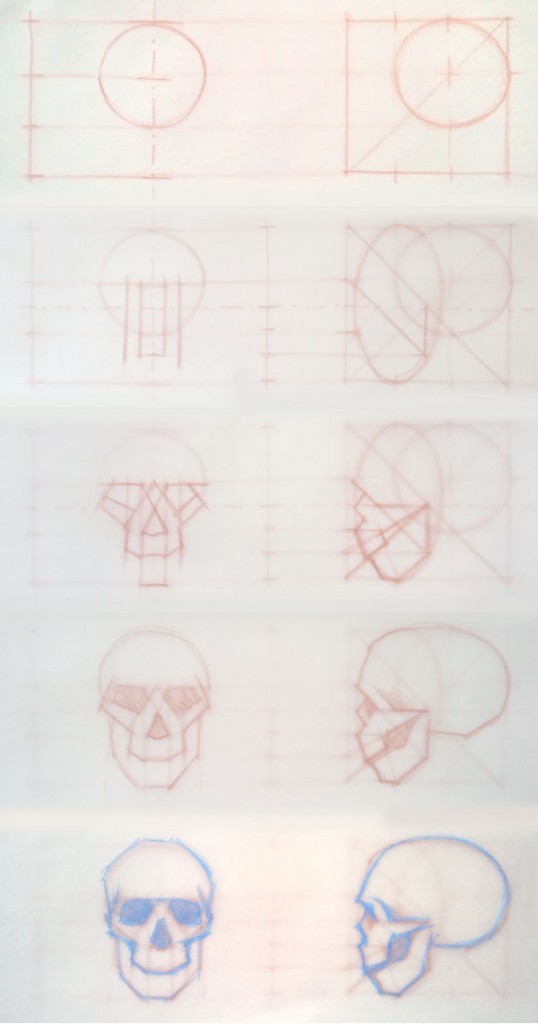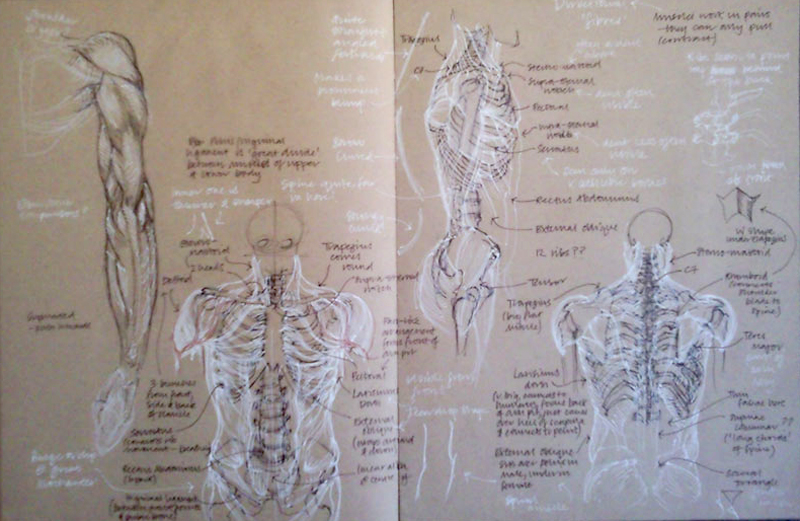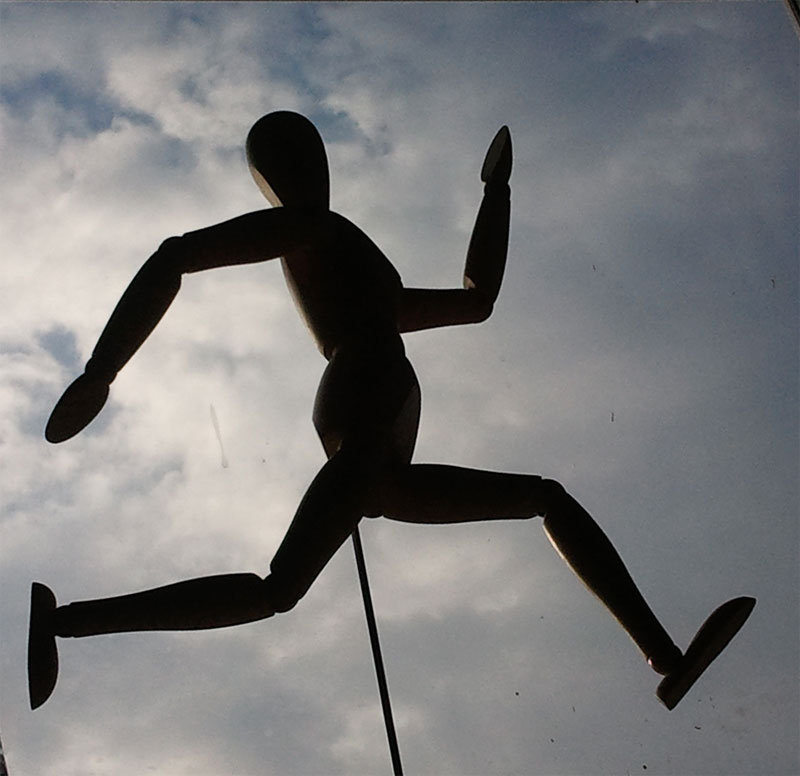I’m starting with the skull in my quest to draw the figure from memory. It’s my benchmark for learning anatomy and a great way to check that I am actually making progress in line with my anatomy strategy.
We covered this in one of the LARA anatomy sessions last term. It all made perfect sense watching someone else constructing the skull but when it came to try it for myself all of those apparently obvious relationships seemed to evapourate. It took a me a few attempts using some anatomy references to reconstruct the process for myself but I found that the time I spent analysing those relationships was well worth the effort.
Here are a couple of my study drawings:
Sequence and relationships:
If you’re reading this you may not have the advantage of a live demo, but I found that the real value in this exercise lay in developing my own understanding of the relationships between different features and angles. I used some simple stages in the drawing above:
- Setting up the overall proportions
- Positioning key features
- Completing the outline
- Check and adjust
I set up the front and profile views simultaneously because I found that it helped me to cross check the proportions, as well as making the relationship between the different views more memorable, for future 3d studies.
Variations in the skull:
The skull varies enormously between individuals as well as with ethnicity, sex and age. I did some sketches of different skulls at the Hunterian Museum:

The Bone Room has some catalogue photos of real skulls which show these kinds of variations more clearly.
If you’re interested there is more background information on the human skull at Wikipedia.


